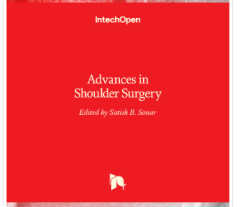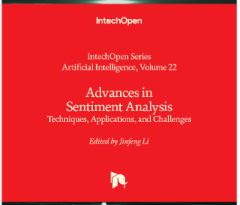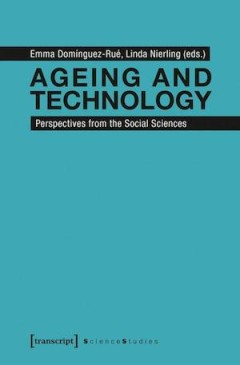Filter by

Advances in Shoulder Surgery
The goal of this book is to provide readers with an update on recent developments in surgical treatment of some shoulder disorders. The perspective of this book involves highlighting management of complex shoulder conditions in better ways. This book is divided into four main sections: 'Repair' involves chapters related to primary repair; 'Replacement' section provides detailed perspective on s…
- Edition
- 1
- ISBN/ISSN
- 9781789230178
- Collation
- -
- Series Title
- -
- Call Number
- -

Advances in Service Robotics
This book consists of 18 chapters about current research results of service robots. Topics covered include various kinds of service robots, development environments, architectures of service robots, Human-Robot Interaction, networks of service robots and basic researches such as SLAM, sensor network, etc. This book has some examples of the research activities on Service Robotics going on around…
- Edition
- 1
- ISBN/ISSN
- 9789537619022
- Collation
- -
- Series Title
- -
- Call Number
- -

Advances in Sentiment Analysis
This cutting-edge book brings together experts in the field to provide a multidimensional perspective on sentiment analysis, covering both foundational and advanced methodologies. Readers will gain insights into the latest natural language processing and machine learning techniques that power sentiment analysis, enabling the extraction of nuanced emotions from text. Key Features: •State-of-th…
- Edition
- 1
- ISBN/ISSN
- 9780850140613
- Collation
- -
- Series Title
- -
- Call Number
- -

Advances in Sensors, Big Data and Machine Learning in Intelligent Animal Farming
Animal production (e.g., milk, meat, and eggs) provides valuable protein production for human beings and animals. However, animal production is facing several challenges worldwide such as environmental impacts and animal welfare/health concerns. In animal farming operations, accurate and efficient monitoring of animal information and behavior can help analyze the health and welfare status of an…
- Edition
- 1
- ISBN/ISSN
- 9783036540351, 9783036540368
- Collation
- -
- Series Title
- -
- Call Number
- -

Ageing in Times of the COVID-19 Pandemic
This Open Access Book contains reports on the situation of people in the second half of life during the first year of the Covid-19 pandemic. The analyses are based on the German Ageing Survey (DEAS) and they provide insights on four main areas of life: income and work, subjective health and well-being, social support and loneliness as well as societal participation. This book is useful for scie…
- Edition
- -
- ISBN/ISSN
- 9783658404871
- Collation
- 253
- Series Title
- -
- Call Number
- -

Ageing in Place in Urban Environments : Critical Perspectives
Ageing in Place in Urban Environments considers together two major trends influencing economic and social life: population ageing on the one side and urbanisation on the other. Both have been identified as dominant demographic trends of the twenty-first century. Cities are where the majority of people of all ages now live and where they will spend their old age. Nevertheless, cities are typical…
- Edition
- -
- ISBN/ISSN
- 9781032134666
- Collation
- 218
- Series Title
- Aging and Society
- Call Number
- -

Ageing in Europe. Supporting Policies for an Inclusive Society
SHARE is an international survey designed to answer the societal challenges that face us due to rapid population ageing. How do we Europeans age? How will we do economically, socially and healthwise? How are these domains interrelated? The authors of this multidisciplinary book have taken a further big step towards answering these questions based on the recent SHARE data in order to support pol…
- Edition
- -
- ISBN/ISSN
- 9783110444414
- Collation
- xii, 380
- Series Title
- -
- Call Number
- -

Ageing as a Unique Experience: Interdisciplinary Approaches to Ageing and Lat…
Ageing is a diverse and multifaceted experience that is unique to each person. The process of ageing is lived differently according to each individual’s socio-cultural, historical, religious, and political context, among other factors. However, the stereotype of homogeneity is still one of the strongest aspects related to later life. This Special Issue covers manuscripts of original research …
- Edition
- -
- ISBN/ISSN
- 9783036566184
- Collation
- 224
- Series Title
- -
- Call Number
- -

Ageing and Technology : Perspectives from the Social Sciences
The booming increase of the senior population has become a social phenomenon and a challenge to our societies, and technological advances have undoubtedly contributed to improve the lives of elderly citizens in numerous aspects. In current debates on technology, however, the »human factor« is often largely ignored. The ageing individual is rather seen as a malfunctioning machine whose def…
- Edition
- -
- ISBN/ISSN
- 9783837629576
- Collation
- -
- Series Title
- Science Studies
- Call Number
- NONE

Ageing and Nutrition through Lifespan
Population is ageing at an unprecedented speed globally. As concept, ageing is considered a continuous process starting from birth and is accompanied by various physiological changes and a number of chronic diseases that affect health and quality of life. Ageing as a continuous process is depending on life course exposures to health risks, lifestyle and nutrition, socioeconomic background, and …
- Edition
- -
- ISBN/ISSN
- 9783039289455
- Collation
- 188
- Series Title
- -
- Call Number
- -
 Computer Science, Information & General Works
Computer Science, Information & General Works  Philosophy & Psychology
Philosophy & Psychology  Religion
Religion  Social Sciences
Social Sciences  Language
Language  Pure Science
Pure Science  Applied Sciences
Applied Sciences  Art & Recreation
Art & Recreation  Literature
Literature  History & Geography
History & Geography